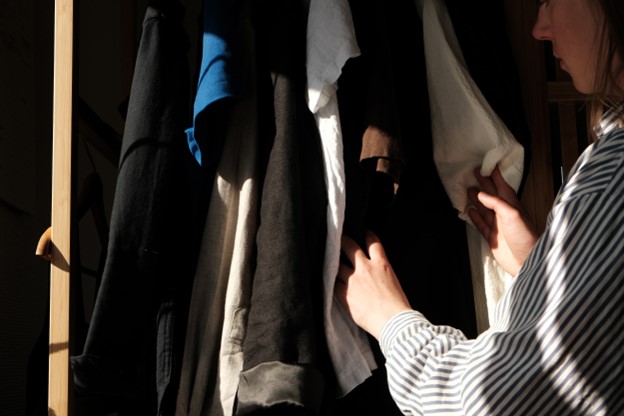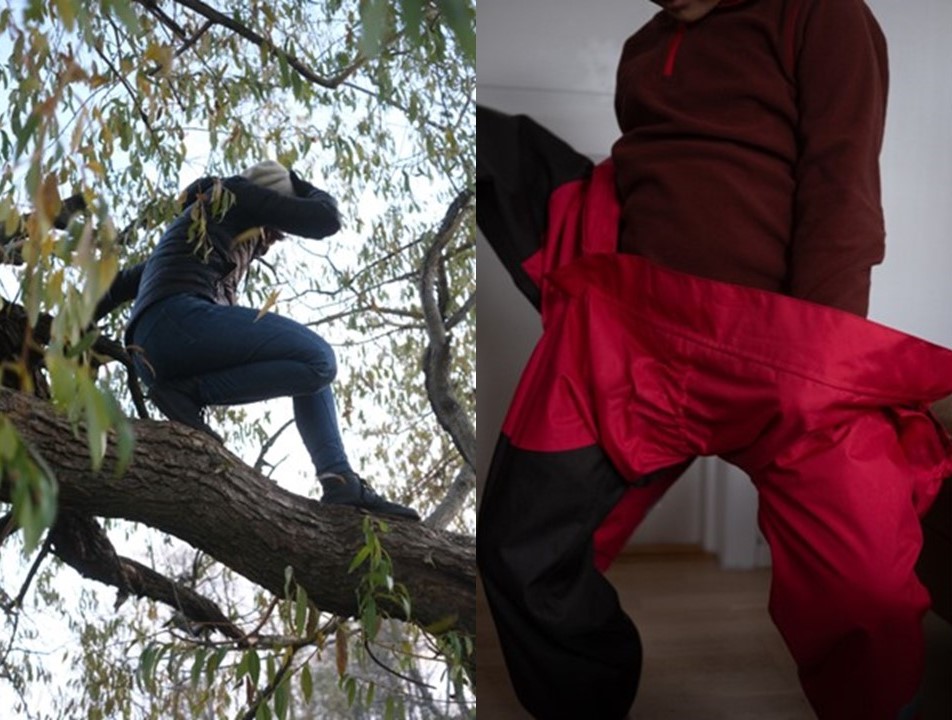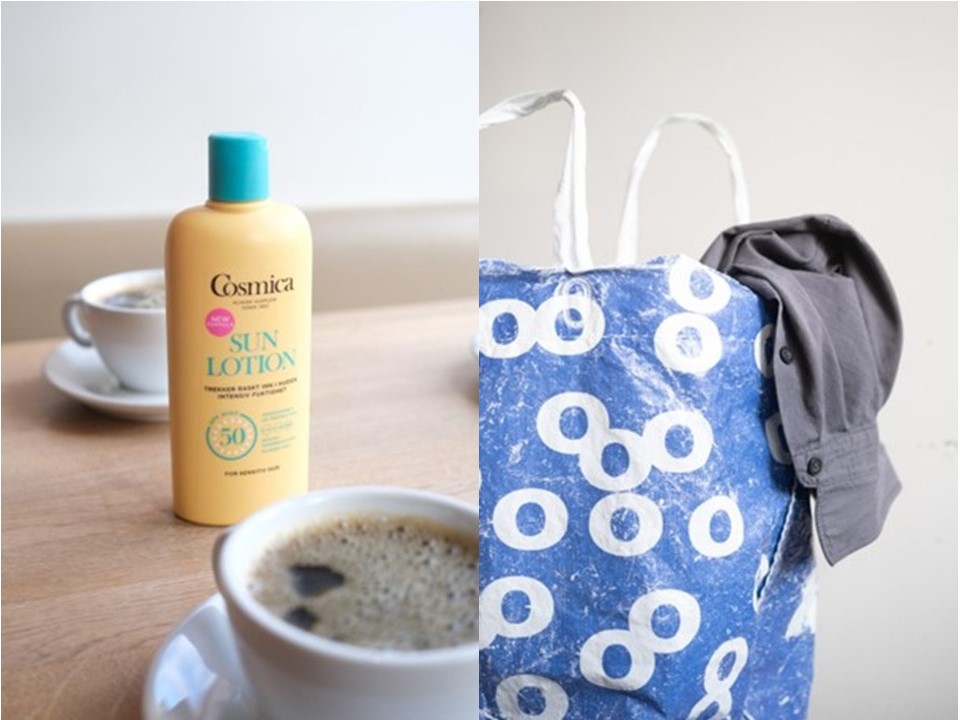Unravelling neurodivergent sensory experiences with clothing
Author: Maureen Selina Laverty, PhD Candidate, NTNU, Trondheim, Norway.
Aim
Wardrobe studies have formed an integral part of my PhD research entitled Sensory Nourishment. I collaborate with people who are neurodivergent: people on the autism spectrum, people with ADHD, people who experience the sensations in our environments at amplified, and often unbearable levels. This can have a profound impact on their well-being, disabling their interactions with the world around them. As a fashion designer I am concerned with the sensory inputs from our closest environment, our clothing. My objective with the wardrobe studies has been to identify neurodivergent individuals’ clothing triggers and glimmers.
Background
One participant described her body as “being too porous so too many of the wrong sensations get through. This leads to sensory overwhelm which is exhausting to process and very distressing for my body” (Anna, 36). The author Katherine May, who herself is on the autism spectrum, writes about sensations “that scream so loud that you want to retreat”. And how she “inhabit(s) a body that simply stops responding when it reaches its point of overwhelm.” (May, 2018) On the flipside, another informant explained that “with heightened sensitivities, the reward is high. When the sensory input is right, it is wonderful!” (Eva, 55).
Context
My adoption of a wardrobe methodology was inspired by an encounter I had with Herman, an autistic teenage boy. When visiting his home, I laid out the early prototypes for a knitted textile I was developing. He screwed up his face and pushed them away. He left the room. Sometime later Herman returned with his mother’s cashmere sweater. His eyes lit up as he pressed it against his cheek. He placed the sweater in my hands and said, “I want it to feel like this”. I visited Herman several times and we developed a very fluid dialogue through tangible objects that he would collect for me to feel. This encounter completely shifted my way of working as a designer. Rather than projecting my solutions onto a user, I saw the importance of being guided by their lived experiences and learning through the objects they surround themselves with in order to live well.

Recruitment
Over the last two years I have interviewed a further 70 neurodivergent informants. For some it is simply a quick chat. For others it has been a series of intensive meetings spanning a couple of years; our collaborative dialogue and articulation of sensory experiences sharpening with each rendezvous. The informants range from non-verbal children to active teenagers, to young professionals, to a factory worker and a diplomat in their 60s. They are all in mainstream education or full-time employment. The wardrobes I examine are situated mainly in Northern Europe: physically, culturally, and climatically.
Adaptation of methodology
I use the term wardrobe both literally and metaphorically (Klepp & Bjerck, 2014). My intention was to visit each participant’s physical wardrobe in their home. For most participants that has been the case. However, for some it felt too intimate. So, they packed up the contents of their wardrobes into shopping bags and brought them to nearby cafes. For a few, the loud background sounds of a cafe were too overwhelming, so they let me rummage through their drawers in the privacy of their work offices. I embraced every opportunity for a wardrobe study, even unpacking the contents of someone’s suitcase at a conference. Covid-19 restrictions meant that sometimes there was a computer screen partitioning me from the wardrobe. The adaptability of the wardrobe methodology was key, in particular with participants who are non-verbal or have communication challenges. The red thread through each adaptation was a sensory ethnographic approach that was “not so much to study other people’s sensory values and behaviours, but to collaborate with them to explore and identify these.” (Pink, 2009)
Stories from meetings with wardrobes
Stine, 26, Researcher
Study Location: Community project & her home
Stine anticipated some knee and hip flexing as we shovelled the ground so some stretch in the trousers was essential. She also anticipated that the ground might be abrasive. Toughness was therefore an equally important characteristic to ease of movement. She had settled on a pair of jeans with a little elastic content. However, she now regretted that decision as the hardware from the waistband was digging into her abdomen as she loaded stones from the ground into a wheelbarrow. Her trousers restricted this bending action by tightening the fabric across her obliques. This particular sensation is a daily obstacle for Stine. It can become so overwhelming that she cannot concentrate on anything else. Over several meet-ups, in Stine’s home, we refined the description of this sensation as akin to that of a stranger slowly sliding their hand around your waist. The sensation approaches from behind. You can’t quite process it until it’s too late. Physically you feel restricted. Emotionally you feel violated. Socially you don’t want to cause a scene.

Right: Laila choreographing with her snowsuit
Photographer: Anders Myklebust
Laila, 4, Barnehagebarn (Kindergarten-kid)
Study Location: Her parent’s apartment
As Laila’s mother led me inside, Laila started to scream and cry. She lay down on the floor, clinging on with determination. Growing tired, Laila wandered off. Her mother nudged my gaze towards the porch. Laila pulled the snowsuit up over her legs and let it rest at her waist. She put her right arm inside a padded sleeve, and then her left. She shrugged it up over her shoulders. Ever so slowly and with great attention she pulled up the zipper with her tiny hands. She then pulled the hood over her head and sighed. As she blocked out the room the crying stopped, the incessant movement subsided, the screaming ceased. Then Laila reversed these actions. The snowsuit was around her ankles once again. She repeated the dressing actions. Then the undressing. Again, again and again.
Tom, 38, Innovation Manager
Study Location: Many cafés
Given the snowstorm outside, it was quite peculiar to be greeted by a bottle of sunscreen placed in the middle of our table. Tom explained that he thought it would be helpful to begin with an abstract of sorts, an executive summary of his sensory dislikes. These were embodied in the bottle of sunscreen: perfumed smell, coldness, slimy texture, someone else must touch you to put it on your back. From under the table, Tom pulled out his comfort shirt from a shopping bag. He let me take it home so I could live with it. Its synthetic fibres and overlocked seams contradicted every other participant’s preference so far. The others exclusively wore natural fibres, covered up thick seams and cut out every label.
Some weeks later, Tom and I met so I could return the shirt. He had kept notes on a new tweed blazer he had bought. Standing in front of the mirror in the store, he had concluded that it fitted his body perfectly. Across the back there was an ease of movement, and the cut was flattering. It projected the confidence of the character he wanted to inhabit at Monday’s presentation. However, on Monday morning, the blazer inhabited him. Tom is very animated with his arms as he presents. The blazer was catching on the top of his inner arm. A catching that restricted him physically and distracted him mentally. This catching made a sound. The longer he wore the jacket the smell of the fabric became more potent. “I couldn’t find a way to decode the experience, it was eating me up, it was almost animalistic, like an animal on my back with the sound and the smell and the restriction to my arms.”

Examples of insights
- Cheap construction, as a result of fast fashion, is one of the main culprits for sensory overwhelm: synthetic fibres, roughly overlocked seams, careless labelling, restrictive cuts.
- Natural fibres are overwhelmingly preferred because of tactility, smell, sound, and thermal regulation. However, tactile perception, preferences and vernacular vary between participants. For some cashmere is a “soft” fabric. For others cashmere has small hairy fibres that cling to the skin. Such participants describe a smooth shirting cotton as “soft”.
- Dominant fashion design practices are traditionally visual and static in their conception of clothing (Skjold, 2018). The wardrobe studies allowed me to see clothing as an act of dressing, a practice of wearing, a series of dynamic actions. This has shifted the moving body to the forefront of my design process.
- The potential for movement facilitates a physical freedom that is inextricably linked to emotional freedom: freedom of choice, freedom from judgement, freedom to move through the day free from distractions and restrictions.
- Comfort is more than simply soft materials or a lack of constraint. It is being able to comfort yourself at times of great discomfort. It is being comfortable with how you are socially presented: “the embedded meanings so implied, can be a source of ease and calm – or its reverse.” (Twigg, 2010)
- Clothing has the potential to activate pleasant sensory stimulation that overrides or dampens problematic sensory inputs from other sources.
Outcomes
The analysis of these wardrobe studies will be published in my PhD monograph (anticipated in 2024). A second component to my PhD is the translation of this analysis into my design practice. Currently I am working with three participants to create a garment each by designing out the depleting sensory inputs and indulging the sensations that nourish. The anticipated result is a series of iterative prototypes whose contribution is less about the final product and more about a way of working. Ethnography is no longer confined to defining design needs. I am now integrating applied ethnography within my design process.
The project has also received innovation funding from NTNU Discovery with the ambition of embedding the wardrobe study insights within the fashion industry by advising companies on more considered approaches to how we craft sensory experiences in terms of design, manufacturing, and shopping.
References
Klepp, I.G. and Bjerck, M. (2014) A Methodological Approach to the Materiality of Clothing: Wardrobe Studies. International Journal of Social Research Methodology, 17(4), pp. 373-386.
May, K. (2018) The Electricity of Every Living Thing. London: Trapeze.
Pink, S. (2009) Doing Sensory Ethnography. 1st edn. London: SAGE Publications Inc.
Skjold, E. (2018) Making sense of dress: On sensory perspectives of wardrobe research. Artifact: Journal of Design Practice, 5(1), pp. 4.1-4.15.
Twigg, J. (2010) Clothing and dementia: A neglected dimension? Journal of Aging Studies, 24(4), pp. 223-230.